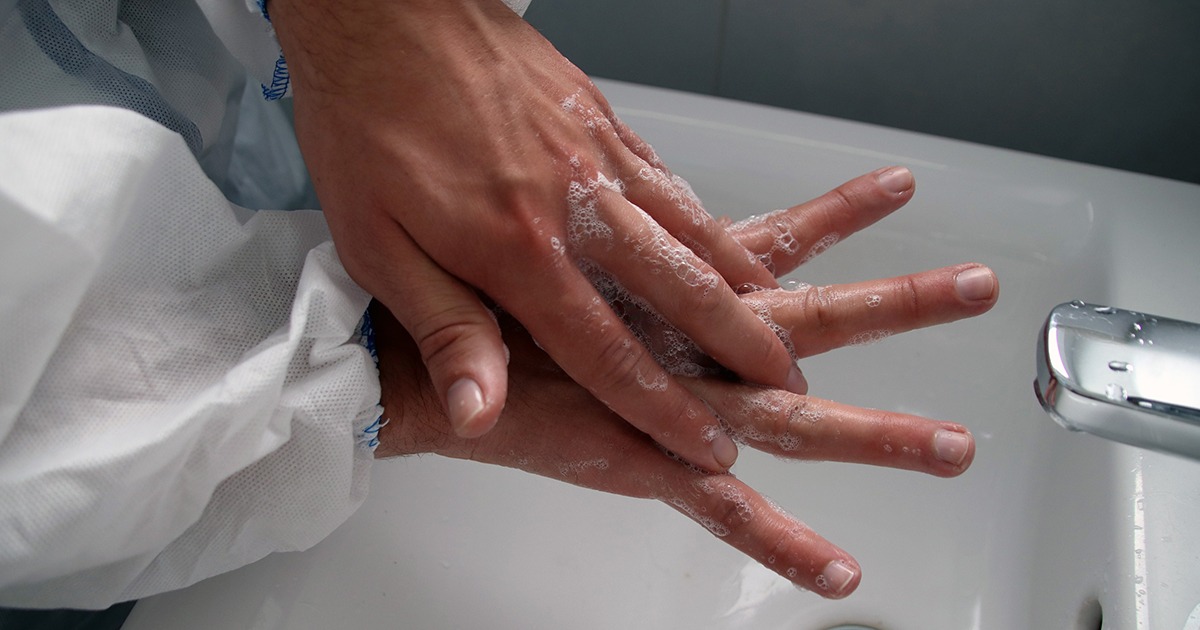Researchers at the University of California (UC), San Diego found evidence that newborn mice can be exposed to triclosan during lactation, resulting in significant fat build up in their liver — an early sign of liver damage. The study was supported in part by the NIEHS Superfund Research Program (SRP) and by an NIEHS Exploratory/Developmental Research Grant.
Triclosan is an antibacterial chemical associated to numerous health concerns, including endocrine disruption, antimicrobial drug resistance, and nonalcoholic fatty liver disease (NAFLD). In 2016, the U.S. Food and Drug Administration banned triclosan from over-the-counter soaps, but the chemical continues to be found in medical-grade antibacterial soaps, toothpastes, and some cosmetics.
Triclosan and liver disease
The team, led by Robert Tukey, Ph.D., and Michael Karin, Ph.D., previously reported that triclosan exposure worsened NAFLD in mice fed a high-fat diet. NAFLD occurs when fat accumulates in liver cells, impairing organ function and can lead to more advanced forms of liver disease and increase the risk of developing type 2 diabetes later in life.
Although liver disease usually occurs in adults, prevalence of NAFLD in children is escalating in the U.S.
Chemistry of breastmilk
Triclosan has previously been detected in human breastmilk, potentially exposing infants to the chemical.
“Recent increases in pediatric NAFLD could be a consequence of mother-to-child transmission of environmental toxicants like triclosan,” Tukey said in a UC San Diego press release.
 Karin and SRP staff after his 2018 NIEHS Distinguished Lecture. From left to right: SRP Health Scientist Administrator Heather Henry, Ph.D.; Karin; SRP Health Specialist Brittany Trottier; SRP Health Scientist Administrator Michelle Heacock, Ph.D.; and SRP Director William Suk, Ph.D. (Photo courtesy of the NIEHS Superfund Research Program)
Karin and SRP staff after his 2018 NIEHS Distinguished Lecture. From left to right: SRP Health Scientist Administrator Heather Henry, Ph.D.; Karin; SRP Health Specialist Brittany Trottier; SRP Health Scientist Administrator Michelle Heacock, Ph.D.; and SRP Director William Suk, Ph.D. (Photo courtesy of the NIEHS Superfund Research Program)To test their hypothesis, the researchers exposed pregnant mice to triclosan in their diet and found that it was efficiently transferred by lactation to newborn mice. They observed that newborn mice exposed to triclosan through their mother’s milk had higher liver weights and accumulated more fat in the liver, among other common early signs of NAFLD.
Potential targets for treatment
In the new study, the scientists further revealed that triclosan modified the expression of two metabolic mechanisms involved in NAFLD development: the transcription-activating factor 4 (ATF4) and the peroxisome proliferator-activated receptor alpha (PPARα).
The team discovered that blocking these mechanisms reduced triclosan-induced fat accumulation in the liver and prevented the expression of genes associated with increased de novo lipogenesis, a key feature associated with NAFLD. De novo lipogenesis is a metabolic process that transforms carbohydrates into fat.
These mechanisms have an important role in NAFLD progression and may provide a basis on which to develop potential therapies for toxicant-associated liver disease, the authors noted.
Citation: Weber AA, Yang X, Mennillo E, Ding J, Watrous JD, Jain M, Chen S, Karin M, Tukey RH. 2022. Lactational delivery of Triclosan promotes non-alcoholic fatty liver disease in newborn mice. Nat Commun 13(1):4346.
(Mali Velasco is a science writer for MDB Inc., a contractor for the NIEHS Superfund Research Program.)
Source link
factor.niehs.nih.gov

